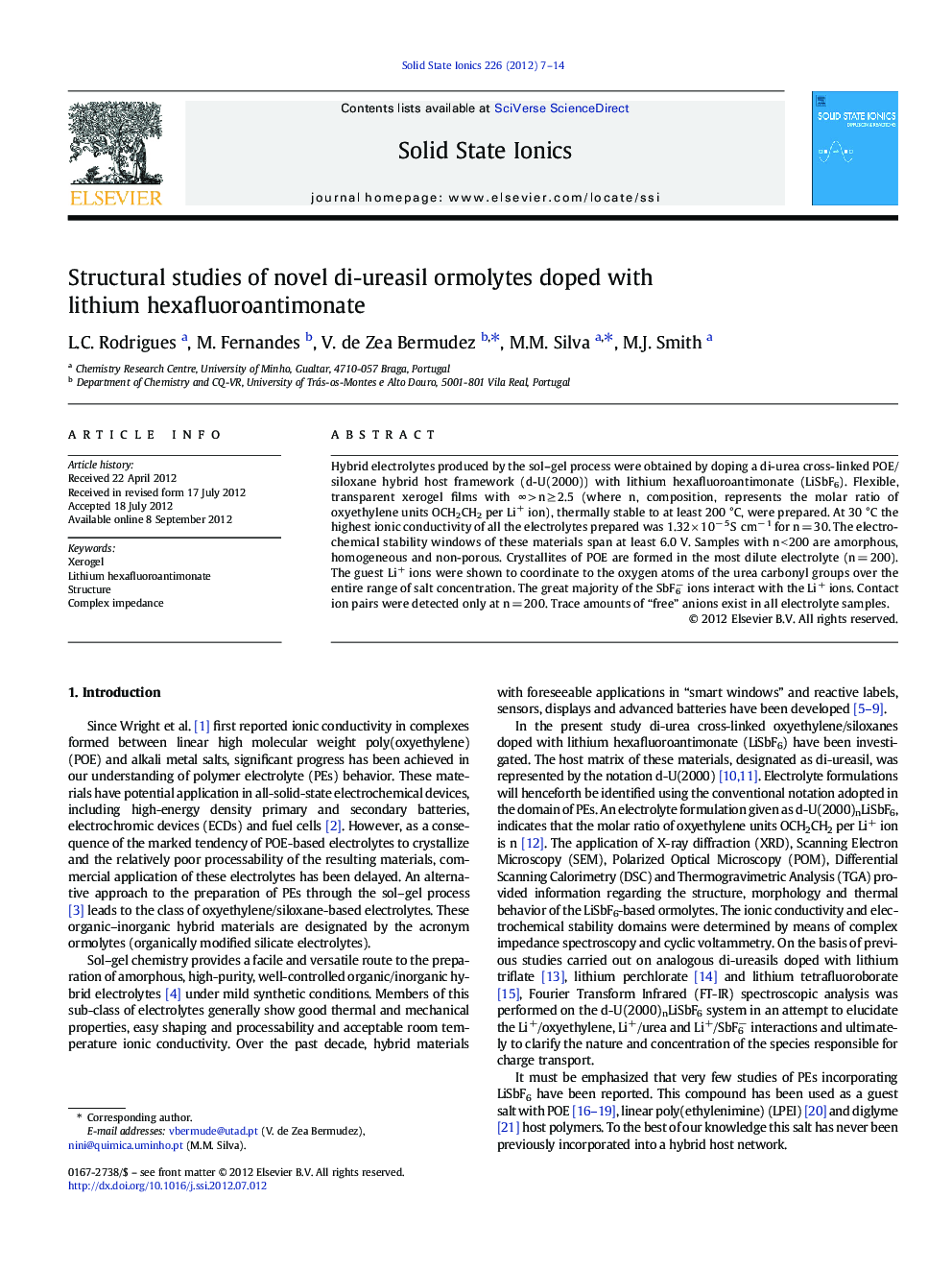| Article ID | Journal | Published Year | Pages | File Type |
|---|---|---|---|---|
| 1298173 | Solid State Ionics | 2012 | 8 Pages |
Hybrid electrolytes produced by the sol–gel process were obtained by doping a di-urea cross-linked POE/siloxane hybrid host framework (d-U(2000)) with lithium hexafluoroantimonate (LiSbF6). Flexible, transparent xerogel films with ∞ > n ≥ 2.5 (where n, composition, represents the molar ratio of oxyethylene units OCH2CH2 per Li+ ion), thermally stable to at least 200 °C, were prepared. At 30 °C the highest ionic conductivity of all the electrolytes prepared was 1.32 × 10− 5 S cm− 1 for n = 30. The electrochemical stability windows of these materials span at least 6.0 V. Samples with n < 200 are amorphous, homogeneous and non-porous. Crystallites of POE are formed in the most dilute electrolyte (n = 200). The guest Li+ ions were shown to coordinate to the oxygen atoms of the urea carbonyl groups over the entire range of salt concentration. The great majority of the SbF6− ions interact with the Li+ ions. Contact ion pairs were detected only at n = 200. Trace amounts of “free” anions exist in all electrolyte samples.
► Hybrid electrolytes produced by the sol–gel process ► We prepared ionic conducting membranes for the specific requirements of the device. ► Hybrid electrolytes have acceptable performance for application in a variety of technological devices.
